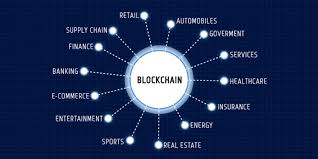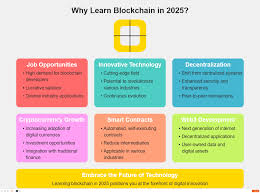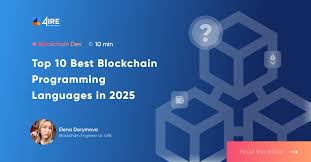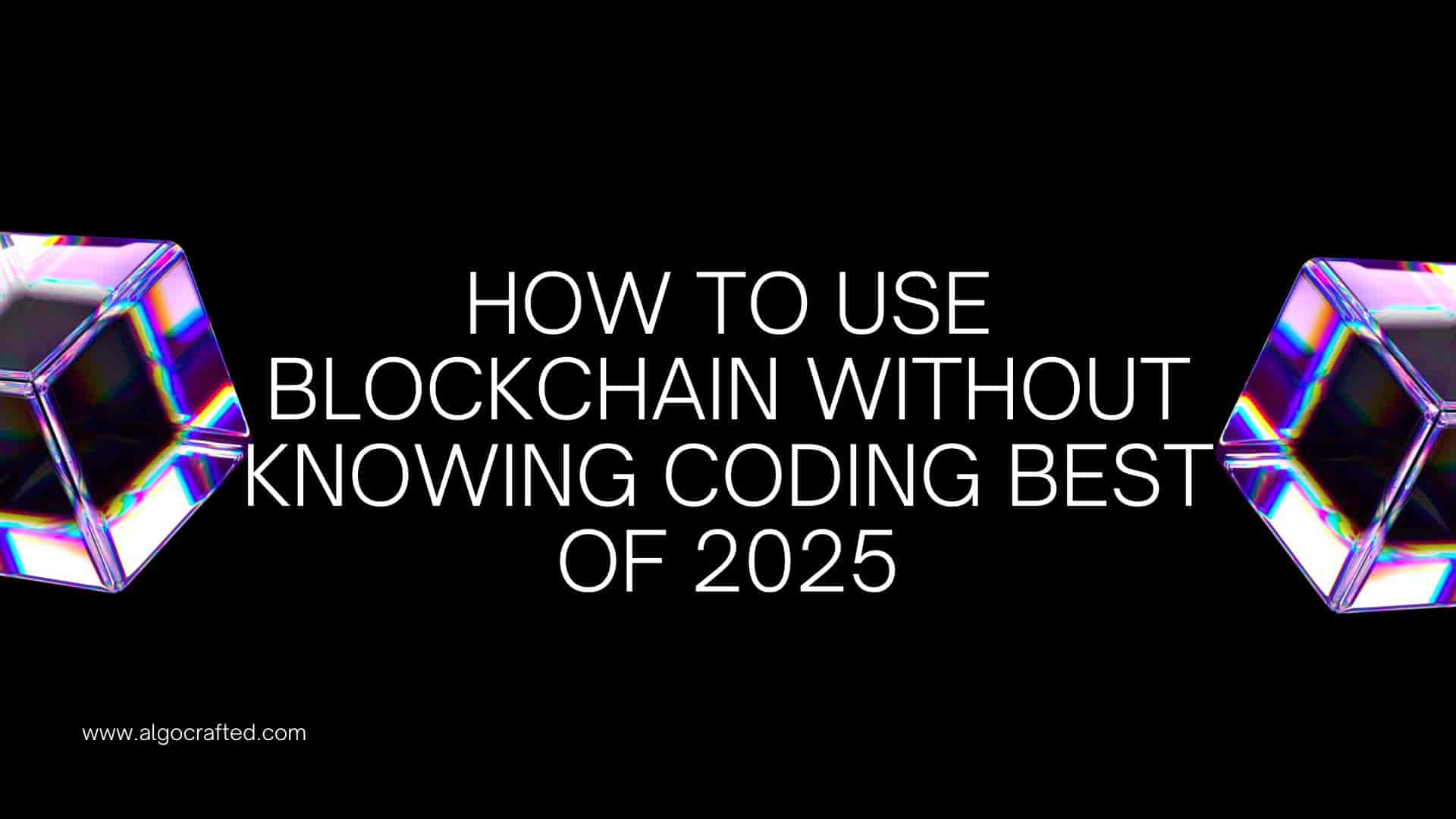What Is Block-chain, Anyway?
Imagine a digital notebook shared across thousands of computers worldwide, where every entry is locked in, tamper-proof, and visible to everyone involved. That’s blockchain in a nutshell! It’s the technology behind cryptocurrencies like Bitcoin and Ethereum, but its potential stretches far beyond digital coins. From securing supply chains to powering digital art (hello, NFTs!), blockchain is revolutionizing how we store and share data.
The best part? In 2025, you don’t need to be a coding genius to use it. This 6000-word guide is your roadmap to mastering blockchain without coding, whether you’re a curious teen, a busy entrepreneur, or a retiree exploring new hobbies. We’ll dive into no-code tools, practical steps, real-world examples, and tips to make blockchain as approachable as your favorite app. Ready to join the decentralized party? Let’s get started!
At its core, blockchain is a decentralized ledger. Unlike traditional databases controlled by a single entity (like a bank or tech giant), blockchain spreads data across a network of computers called nodes. Each “block” contains a batch of transactions, linked to the previous block in a “chain.” Once added, it’s locked forever, making it secure and transparent. Think of it as a digital vault that’s both Fort Knox and a glass house. While the tech sounds complex, no-code platforms have made it accessible to everyone, no programming skills required.
Blockchain’s rise is staggering. By 2025, 68% of businesses are expected to adopt blockchain technology, according to Gartner. From finance to healthcare, its applications are endless. But don’t worry about the jargon—we’re here to simplify it with tools and steps anyone can follow.
Why Use Block-chain Without Coding?
Not too long ago, blockchain was a walled garden for coders fluent in languages like Solidity or Rust. If you didn’t know how to write a smart contract, you were out of luck. Enter no-code platforms, the superheroes of accessibility that have flung open the gates. These tools let anyone—yes, even your tech-phobic uncle—create blockchain projects without touching a line of code. Here’s why you should jump on this trend:
- Universal Access: No-code platforms use intuitive, drag-and-drop interfaces, making blockchain accessible to all ages and skill levels.
- Budget-Friendly: Skip hiring expensive developers and save thousands. No-code tools are often affordable or even free.
- Speedy Results: Build and launch projects in hours or days, not months. Time is your superpower!
- Creative Freedom: Focus on your vision—whether it’s an NFT collection or a supply chain tracker—without wrestling with code.
- Market Demand: With block-chain adoption soaring, non-coders can tap into a $1.4 trillion market by 2030, per industry forecasts.
Whether you’re a student, small business owner, or retiree, no-code blockchain lets you innovate without the tech headaches. It’s like baking a cake with a ready-mix box—follow the steps, and you’re golden!
Read more: Top 10 Powerful AI Automation Tools for Businesses in 2025
Top No-Code Block-chain Tools for 2025
No-code platforms are the secret sauce to using blockchain without coding. They’re designed for beginners, packed with drag-and-drop features, and integrate seamlessly with blockchains like Ethereum, Polygon, or Solana. Let’s explore the top tools for 2025, their features, and what they’re best for.
Best No-Code Block-chain Platforms
| Platform | Key Features | Best For | Pricing (2025) |
|---|---|---|---|
| Bubble | Drag-and-drop builder, Ethereum/Polygon integration, Web3 plugins | Web3 apps, dApps | $29/month+ |
| OpenZeppelin | Pre-built smart contracts, no-code templates, multi-chain support | Smart contracts, tokens | Free tier, premium $99/month |
| Moralis | Web3 APIs, wallet integration, scalable backend | Wallet apps, dApps | $50/month+ |
| Rarible | NFT creation, marketplace integration, royalty settings | NFT projects | Per-mint fees ($10–$50) |
| Airtable | Data management, blockchain syncing, automation tools | Supply chain, data tracking | $20/month+ |
| Zapier | Block-chain automation, connects apps to chains | Workflow automation | $19.99/month+ |
These platforms make block-chain apps as easy as building a website on Wix. Bubble shines for creating decentralized apps (dApps), while Rarible is the go-to for minting NFTs. OpenZeppelin simplifies smart contracts with pre-built templates, and Moralis powers wallet-based projects. Airtable is perfect for data-driven block-chain use cases, and Zapier automates blockchain workflows. Not sure which to choose? Check user reviews on Capterra to find the best fit.

How to Pick the Right Platform
Choosing a platform depends on your project. For NFTs, Rarible’s marketplace integration is unbeatable. Building a dApp? Bubble’s flexibility is key. Need to track data on a blockchain? Airtable’s spreadsheet-like interface is your friend. Compare pricing, blockchain compatibility (e.g., Ethereum vs. Solana), and ease of use. Most platforms offer free trials, so test them out before committing.
Pro tip: Check the platform’s community forums or blockchain forums for user tips and tutorials. A quick search on X can also reveal real-time feedback from other non-coders.
Step-by-Step Guide to Block-chain
Ready to dive into blockchain without coding? This step-by-step guide is your blueprint for success. Follow along, and you’ll be launching projects faster than you can say “decentralized ledger.”
Step 1: Define Your Blockchain Goal
Start by clarifying your objective. Are you creating an NFT collection to sell digital art? Launching a token for a crowdfunding campaign? Tracking products in a supply chain? Your goal shapes your tool choice and strategy. For example, Rarible is ideal for NFTs, OpenZeppelin for tokens, and Airtable for data tracking. Write down your goal to stay focused.
Step 2: Choose a No-Code Platform
Pick a platform from the table above that aligns with your goal. Bubble is great for building dApps, Moralis for wallet integrations, and Rarible for NFTs. Check no-code platform reviews to ensure it’s beginner-friendly. Most platforms offer step-by-step tutorials or templates to guide you.
Step 3: Set Up a Crypto Wallet
A crypto wallet is your blockchain passport. MetaMask is the most popular—download it as a browser extension or mobile app, create a secure password, and save your 12-word recovery phrase (store it offline, never share it!). Connect your wallet to your no-code platform to interact with blockchains like Ethereum, Polygon, or Solana.
Setting up MetaMask takes less than 5 minutes. Once connected, it acts as your digital ID for signing transactions or minting NFTs. Other wallets like Coinbase Wallet or Trust Wallet work too, but MetaMask is the most compatible with no-code tools.
Step 4: Build Your Blockchain Project
Now comes the fun part—building! Use your platform’s drag-and-drop interface to create your project. On Bubble, you can design a Web3 app with pre-built plugins for blockchain integration. Rarible lets you upload art, set royalties, and mint NFTs in minutes. OpenZeppelin offers templates for tokens or smart contracts—just fill in details like token name or supply.
For example, to create an NFT on Rarible, upload your image, add a description, set a price, and click “Mint.” Bubble users can drag elements like buttons or forms to build a dApp, then connect it to Ethereum via plugins. Airtable users can sync spreadsheets with a blockchain like VeChain for transparent data tracking.
Step 5: Test on a Testnet
Before launching, test your project on a blockchain testnet (e.g., Ethereum’s Ropsten or Polygon’s Mumbai). Testnets use fake crypto, so you can experiment without spending real money. Most no-code platforms have built-in testnet options—follow their prompts to simulate transactions or NFT mints. This step saves you from costly mainnet mistakes.
Step 6: Launch on the Mainnet
Once your project is polished, deploy it on the mainnet—the live blockchain. This might involve paying “gas fees” (transaction costs), which vary by blockchain (Ethereum’s fees are higher than Polygon’s). Platforms like Rarible and Bubble guide you through the process with clear instructions. Double-check everything before hitting “Deploy”!
Step 7: Promote Your Project
Your project is live—now spread the word! Share it on crypto communities like X, Discord, Reddit, or Telegram. Craft engaging posts with visuals to grab attention. For example, tweet: “Just launched my first NFT collection on Rarible—no coding needed! Check it out: [link].” Join blockchain groups to network and get feedback.
Real-World Block-chain Uses
Blockchain isn’t just for crypto enthusiasts in hoodies—it’s transforming industries. Non-coders are using no-code tools to create impactful projects. Here are some real-world applications:
NFT Creation
Artists, musicians, and creators are cashing in on NFTs using platforms like Rarible. Upload your digital art, set a price, and sell it globally—no coding required. In 2024, NFT sales hit $25 billion, per NonFungible. From digital paintings to virtual concert tickets, NFTs are a goldmine for creators.
For example, a high school artist can upload a digital sketch to Rarible, mint it as an NFT, and sell it on the marketplace. With royalties set, they earn a percentage every time the NFT is resold. It’s like selling a painting that keeps paying you!
Supply Chain Tracking
Businesses use Airtable to track goods on blockchains like VeChain or IBM Blockchain. Sync your Airtable spreadsheet with a blockchain for transparent, tamper-proof records. For instance, a coffee shop can track beans from farm to cup, ensuring ethical sourcing. No coding needed—just spreadsheets with blockchain superpowers.
This transparency builds customer trust. A 2024 study found 73% of consumers prefer brands with traceable supply chains. Non-coders can set this up in hours using Airtable’s blockchain integrations.

Token Creation
Launch your own token for crowdfunding, loyalty programs, or community projects using OpenZeppelin’s no-code templates. It’s like printing your own digital currency (legally, of course). For example, a small business can create a loyalty token to reward customers, redeemable for discounts. OpenZeppelin’s templates make it as easy as filling out a form.
Decentralized Apps (dApps)
Build dApps with Bubble to create voting systems, social platforms, or gaming apps. No coding skills? No problem! Drag-and-drop your way to a decentralized masterpiece. For instance, a community group can build a transparent voting dApp, ensuring results are tamper-proof. Bubble’s Web3 plugins make it seamless.
Automated Workflows
Zapier connects block-chain apps to everyday tools like Google Sheets or Slack. Automate tasks like sending NFT sale alerts or updating supply chain data. For example, a retailer can set up a Zapier workflow to log blockchain transactions in a spreadsheet, saving time and effort.
Common Mistakes to Avoid
Blockchain can be a wild ride, but avoiding these pitfalls keeps you on track:
- Neglecting Security: Never share your wallet’s private key or recovery phrase. Use two-factor authentication (2FA) on MetaMask and store your recovery phrase offline.
- Skipping Testnets: Always test on a testnet to avoid costly mainnet errors. For example, minting an NFT on Ethereum’s mainnet can cost $50–$200 in gas fees.
- Overpaying Gas Fees: Check gas prices on Etherscan to time transactions when fees are low.
- Ignoring Community Feedback: Engage with users on blockchain forums to refine your project.
- Falling for Scams: Avoid “too-good-to-be-true” blockchain schemes. Stick to reputable platforms like those listed above.
Stay vigilant, and you’ll navigate blockchain like a seasoned pro.
Tips for Block-chain Success
Want to stand out in the blockchain world? These tips will set you up for success:
- Start Small: Begin with a simple project, like minting an NFT, to learn the ropes without overwhelm.
- Prioritize Security: Use strong passwords, 2FA, and trusted platforms to protect your assets.
- Join Communities: Connect with blockchain enthusiasts on crypto communities like X or Discord for advice and networking.
- Stay Informed: Follow crypto news to keep up with blockchain trends and updates.
- Use Analytics: Track your project’s performance with tools like Google Analytics or Dune Analytics for insights.
- Experiment Freely: Use testnets to try new ideas without financial risk.
Future of No-Code Blockchain
The no-code blockchain space is on fire. By 2026, over 80% of blockchain projects are expected to involve no-code tools, thanks to their ease and scalability. Here are key trends to watch:
- AI Integration: Platforms like Bubble and Moralis are adding AI to suggest designs or automate workflows, making no-code even easier.
- Cross-Chain Compatibility: Tools are supporting multiple blockchains (e.g., Ethereum, Solana, Polygon) for flexibility.
- Eco-Friendly Blockchains: Energy-efficient chains like Solana are gaining traction, reducing environmental concerns.
- Mainstream Adoption: From healthcare to gaming, no-code blockchain is entering new industries.
Case Studies: No-Code Success
Need inspiration? Here are real-world examples of non-coders crushing it with blockchain:
Case Study 1: Teen Artist’s NFT Success
Sarah, a 17-year-old artist, used Rarible to mint a collection of digital sketches. Without coding, she uploaded her art, set 10% royalties, and sold her NFTs for $5,000 in a month. Her secret? Promoting on X and joining NFT Discord groups. Total setup time: 2 hours.
Case Study 2: Small Business Token
A local bakery used OpenZeppelin to create a loyalty token. Customers earned tokens for purchases, redeemable for free coffee. Using no-code templates, the owner launched the token in a day, boosting sales by 20%. No developers needed!

Case Study 3: Supply Chain Transparency
A clothing brand used Airtable and VeChain to track its supply chain. By syncing Airtable data with the block-chain, they provided customers with transparent sourcing info, increasing trust and sales. Setup took one weekend, no coding required.
FAQs About Block-chain Without Coding
Can I Use Blockchain Without Coding Skills?
Yes! No-code platforms like Bubble, Rarible, and OpenZeppelin offer drag-and-drop interfaces to create blockchain apps, NFTs, or tokens. Set up a wallet like MetaMask, choose a platform, and start building—no coding skills needed!
What Are the Best No-Code Blockchain Tools?
Top 2025 tools include Bubble (Web3 apps), Rarible (NFTs), OpenZeppelin (smart contracts), Moralis (wallets), Airtable (data tracking), and Zapier (automation). They’re beginner-friendly and designed for non-coders.
Is Block-chain Safe for Beginners?
Blockchain is safe with trusted platforms and secure wallets like MetaMask. Use 2FA, never share private keys, and test on testnets to avoid risks. Research platforms thoroughly to ensure reliability.
How Much Does No-Code Blockchain Cost?
Costs vary: Rarible charges $10–$50 per NFT mint, Bubble starts at $29/month, Moralis at $50/month. Blockchain gas fees (e.g., Ethereum’s) can range from $5–$200. Check Etherscan for fee updates.
Can I Make Money with Block-chain?
Absolutely! Sell NFTs, launch tokens, or build dApps for profit. In 2024, NFT creators earned billions. Promote your project on X or Discord and research market trends to boost earnings.
Conclusion
Blockchain in 2025 is no longer just for coders—it’s for everyone! With no-code platforms like Bubble, Rarible, OpenZeppelin, and Airtable, you can create NFTs, tokens, dApps, or supply chain trackers without writing a single line of code. Whether you’re a teen artist, a small business owner, or a retiree exploring new ventures, blockchain is your playground. Start small, stay secure, and let your creativity run wild. Ready to dive in? Pick a platform, follow the steps, and make your mark in the decentralized world. Share your thoughts or questions in the comments below!

